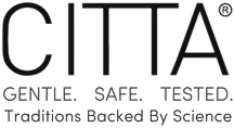Blogs
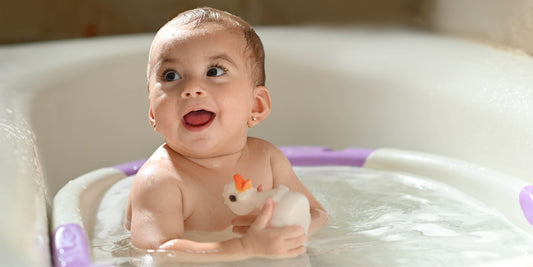
How Often Should You Bathe a Newborn Baby?
Babies don’t need to be bathed every day. Yes, you heard that right! If you’re a new parent having newborn bathing questions, the most pressing being, “How often should I...
How Often Should You Bathe a Newborn Baby?
Babies don’t need to be bathed every day. Yes, you heard that right! If you’re a new parent having newborn bathing questions, the most pressing being, “How often should I bathe my newborn?” you’re on the right page. As their skin adjusts to the dry air, the little ones shed about 3 layers of skin within their first week, and it’s perfectly normal. Therefore, it’s ideal to delay your newborn’s first bath for at least 2 weeks. Skin irritation during this time can be prevented by keeping your little one adequately moisturized with a natural balm moisturizer crafted for a newborn’s delicate and sensitive skin. After that first two-week period, start bathing your little nugget twice or thrice a week with the best newborn bath products, and modify the bath schedule based on their skin health and lifestyle. Let’s delve deeper into the details! Are Less Frequent Baths Best for Babies? Yes! Previously, bathing a baby right after birth was the best practice; however, studies now indicate that delaying the first bath can be beneficial for their delicate skin, which is 20 times thinner and more sensitive than adults. Bathing - From Day 1 to Toddlerhood Frequent baths can dry out their sensitive skin leading to several skin-related concerns. During the early months, say after 1-3 months, start bathing your little one twice or thrice a week in lukewarm water. It’s also important to remember that for newborns, only the best works. Using the best newborn bath products consciously crafted with natural ingredients like aloe vera, oat kernel flour, and olive oil will keep your baby’s skin healthy and nourished from within. Products with harsh chemicals and toxins like parabens, sulphates, and phthalates can strip away the natural oils of the skin. Therefore, it is imperative to steer clear of newborn products that contain such chemicals. Gentle, natural ingredients help retain the moisture of the skin while keeping it protected from environmental stressors. As your baby grows, modify their bath schedule a little. Your little one will still need 2-3 baths per week after the 3rd month; however, if they seem to enjoy the splish-splash adventures, start bathing them frequently till toddlerhood using only the best newborn bath products like best newborn bath products and baby shampoo. Post-bath, moisturization with the best balm moisturizer is a must. Your Baby’s First Bath It might feel odd for new parents to bathe their little ones so infrequently; however, it’s important to remember that your baby doesn’t need as much bathing as you. Their skin is far more sensitive than adults, and most importantly, they don’t sweat or get as dirty as older people. Here’s what you need to know: ● Bathing In the First Months: To avoid drying out your little one’s skin, bathe them only twice or thrice a week in lukewarm water. Use only a mild and tear-free infant baby wash thoughtfully formulated with nourishing ingredients like hydrolyzed rice protein, aloe vera, and coconut oil. To make bath time more comfortable for your little one, start by gently washing your baby’s face and hair and work your way downward. Soap and rinse as you go, paying special attention to the skin folds as they can trap bacteria and dead skin cells. ● Select Best Baby Body Wash for Bathing: When selecting an infant body wash, make sure to go for the best body wash for newborns formulated consciously with natural and nourishing ingredients. Aim for a body wash foam that is hypoallergenic and free of harmful chemicals and toxins like sulphates, phthalates, and parabens. The best body wash for infants doesn’t dry out delicate skin and prevents skin-related concerns like irritation and inflammation. Besides, make sure to follow up with a moisturizing balm to retain moisture. ● How to Keep Your Baby’s Skin Clean Between Baths: Between baths, keep your little one’s skin by gently wiping their face, hands, and the diaper area daily with a soft washcloth or alcohol-free, gentle baby wipes. Extra attention is to be paid to skin folds where residue or sweat tends to accumulate. Additionally, keep your baby’s clothes clean as it also helps maintain skin hygiene. Pro Tip Give your newborn sponge baths during the first two weeks of life using room-temperature water and a soft washcloth. Start with the head and end with the diaper area. Make sure to lightly stroke their skin and not rub. Pay special attention to the creases or skin folds, fingers, toes, and knees. Finally… Wrapping up, your little one’s bathing routine needs to be as simple as possible. Using too many products can do more damage than good to their delicate skin. Use only the best newborn bath products to keep your baby’s skin soft and supple. Hope this guide will help you make your baby’s bath time a breeze! Happy Parenting!
Read More
How Should First-Time Mothers Shortlist the Bes...
As a new mom, you want the best for your baby, ensuring every aspect of care is impeccable, including their skincare routine. Your little one’s skin is 20 times thinner...
How Should First-Time Mothers Shortlist the Best Oil for Baby Massage?
As a new mom, you want the best for your baby, ensuring every aspect of care is impeccable, including their skincare routine. Your little one’s skin is 20 times thinner and more sensitive than yours, which makes it more susceptible to external stimuli. Therefore, it needs some extra tender loving care. Besides having a plethora of benefits, baby massage is the most beautiful way to bond with your little sunshine. Here are a few things that you should consider when choosing an infant massage oil. Keep reading! Why Should Baby Massage Oil be Hypoallergenic? The best oil for newborn dry skin helps soothe and relax the little one’s tender muscles. Since babies have sensitive skin and are allergic to certain ingredients in infant massage oils, it is important to choose a hypoallergenic infant massage oil that is enriched with natural ingredients like coconut oil, almond oil, and olive oil. Any potential allergens and harmful ingredients can wreak havoc on the little one’s delicate and sensitive skin. The best oil for newborn dry skin should be hypoallergenic in nature, which means it will not cause any irritation or allergic reactions. What are the benefits of doing an oil massage for a newborn? There are a number of benefits of massaging a newborn. Let’s look at them: - Massaging a newborn with the best oil for newborn dry skin helps soothe and nourish their delicate skin from within. - Massaging a baby with the best oil for newborns can help comfort and ease them. This is especially beneficial for issues like colic, indigestion, constipation, and others. - Gentle massage with an infant massage oil can help improve your little one’s blood circulation. This, in turn, prevents colds, promotes growth and development, and boosts immunity. - Massaging is also a great way to bond with the baby. It helps parents learn about their little ones’ cues, what they like, and what they dislike. It is a form of non-verbal communication that provides a sense of security. - A gentle massage before bedtime promotes better sleep. Make sure to pick the best oil for newborn dry skin that is infused with the goodness of nourishing, natural oils like coconut, almond, olive, and sesame, to name but a few. - Massaging your baby will not only help them relax but also it can lower their stress levels. Additionally, the whole process is enjoyable. How to Incorporate Oil into Your Newborn’s Skin Care Routine Some parents swear by coconut oil for newborn massage and some almond oil massage for newborns. Some even feel olive oil for infant massage is the best. The point is if you are looking for an oil for newborn dry skin, make sure to look for natural ingredients. Natural oils like olive, coconut, almond, sesame, or sunflower are the best oils for newborn dry skin. Besides, check if the infant massage oil is hypoallergenic and free from harmful toxins and chemicals like parabens, mineral oils, and phthalates. Don’t forget to read the label carefully before making your purchase. Additionally, since India has a hot and humid climate, it’s best to go for easily absorbing oils that have a light texture. Which Oil is Best for Baby Massage for Fair Skin? Baby massage is a beautiful way to bond, which has its very own benefits. Yet one of the most popular questions on the internet is - which oil is best for a baby’s fair skin? When massaging a baby, the main focus should be on comforting your baby. The best oil for newborns promises healthy skin from within. When choosing an infant massage oil for your little one, make sure to look at the ingredients list carefully. Check if the oil that you have selected has all the nourishing, natural ingredients like coconut oil, almond oil, olive oil, and other essential oils. These natural oils work together to promote healthy skin.Besides, the best oil for newborn dry skin comes in a very light texture so that it can be easily absorbed without feeling too heavy on the skin. With so many options available in the market, it can seem a little daunting to pick the right one for your little nugget’s sensitive skin. However, if you keep the above points in mind, it won’t be as difficult as you think. When Should You Start Giving an Oil Massage to Your Newborn Baby? Start gently massaging your baby with the best oil for newborn dry skin once they are a month old. Gradually increase the frequency of massages as your little one grows. Using gentle strokes when massaging the little nugget is important, as too much pressure can cause discomfort. You can always consult a medical professional if you’re not too sure of the massaging techniques. Summing up To sum up, massaging your baby with the infant massage oil can be a great bonding experience for both you and your little one. The key is to stay consistent, be mindful, and use the best oil for newborn dry skin, and every upcoming massage sesh will be as beautiful as your little one.
Read More
Natural Relief for Broken Skin: Top 5 Diaper Ra...
Around 50% of children up to 2 years of age suffer from diaper rash in India, a leading cause of most pediatrician visits. A common concern among new parents, diaper...
Natural Relief for Broken Skin: Top 5 Diaper Rash Creams
Around 50% of children up to 2 years of age suffer from diaper rash in India, a leading cause of most pediatrician visits. A common concern among new parents, diaper rash is a type of skin irritation that develops in the diaper region. It typically manifests as redness and can range from moderate to severe. In some cases, severe diaper rash can be painful and uncomfortable for children. Now the question is what causes diaper rash? Prolonged exposure to moisture can lead to bacterial and yeast infections - the main culprit of diaper rash development. Other factors, like sensitive skin, introduction of new meals, friction, and chemicals in urine and stool, can all contribute to the development of diaper rash. New parents are often on the lookout for the best diaper rash cream, and to get there, we need to first understand why diaper rash creams should be an essential part of your child’s everyday skincare routine. Let’s delve deeper! Why Diaper Rash Creams Are Essential The role of a diaper rash cream can never be underestimated. A diaper rash cream with zinc oxide helps keep pesky rashes at bay as well as avoid new ones. Consciously formulated to address the most common symptoms and causes, the best cream for diaper rash brings relief and comfort to the little ones. Here’s how it works: - Heals existing rashes - Creates a protective barrier - Promotes skin restoration - Prevents new infections - Reduces friction - Maintains skin health and comfort How to apply a diaper rash cream? ● Cleanse your little one’s delicate skin thoroughly with a soft cloth and warm water, and pat it dry (don’t rub). ● Apply a thin layer of cream to clean, dry skin at each diaper change. ● Pay special attention to areas prone to irritation, such as the buttocks, genitals, and creases. ● Put on a new diaper, and make sure it is not placed too tightly as friction can worsen the rash. Key Ingredients to Look for in Diaper Rash Creams You must be thinking, “Which is the best diaper rash cream?” To understand that, it is important to know what key ingredients one should look for in diaper rash creams. Babies’ skin is 20 times thinner and more sensitive than adult skin, and no matter how careful you are, diaper rash affects nearly every infant at some point. To keep your baby’s skin protected from irritation, inflammation, and redness, look for a diaper rash cream with zinc oxide. Besides, natural ingredients like soybean, chamomile, and sunflower oil are soothing agents that help soothe inflamed skin. Additionally, make sure to check the label before making a purchasing decision, as many newborn products contain harmful ingredients like parabens and phthalates. Steer clear of such products for the utmost safety of your newborn. Top Recommended Diaper Rash Creams for Infants When selecting a diaper rash cream, it’s crucial to check the product’s contents. The top-rated diaper rash cream should contain natural and nourishing ingredients that won’t harm the baby’s delicate and sensitive skin. A diaper rash cream with zinc oxide is most effective as zinc oxide has mild antiseptic properties that help heal inflamed skin. Additionally, the best diaper rash creams contain other soothing agents such as chamomile oil, soybean oil, and sunflower oil to soothe irritated skin. Formulated with these ingredients, CITTA’s diaper rash cream is one of the most recommended diaper rash creams for infants. Dermatologist-approved, this diaper rash cream is free from harmful chemicals and toxins like parabens, sulfates, and phthalates. The Role of Diaper Rash Creams in Healing and Preventing Rashes Diaper rash creams with zinc oxide and other soothing agents like chamomile oil form a barrier on the skin’s surface when applied. This barrier acts as a protective coating and blocks irritants like moisture, enzymes, and bacteria from coming into direct contact with the skin. By preventing these irritants, zinc oxide’s protective barrier helps reduce the risk of inflammation, redness, and irritation in the diaper area. Studies published in dermatological journals have documented the antiseptic properties of zinc oxide, which reinforces its role in protecting the skin from microbial threats. It helps inhibit the growth of bacteria on the skin, especially in diaper regions where warm and moist conditions promote bacterial proliferation. Besides, the best diaper rash creams for infants help absorb excess moisture and keep the area dry. This is important because prolonged exposure to moisture can break down the skin’s natural barrier, making it more susceptible to irritation and rashes. By maintaining a dry environment, zinc oxide reduces the likelihood of rash development and helps heal existing rashes more quickly. How Long Does it Take to Heal Diaper Rashes? With a top-rated diaper rash cream, a diaper rash will clear up within 2-3 days. Additionally, practice proper hygiene like changing diapers every 2-3 hours or as soon as your little one pees or poops. Apply the best diaper rash cream on every diaper change and make sure to incorporate it into your baby’s daily skincare routine. Conclusion Simply put, you can keep the pesky rashes away by practicing proper hygiene, using the right diapers, and using the best diaper rash cream regularly.
Read More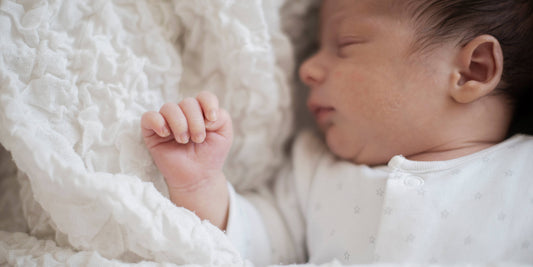
Why You Should Use Baby Balm Moisturizers for Y...
Did you know your little one’s skin is 20 times thinner and more sensitive than yours? Yes, since the protective layer of the skin doesn’t fully develop in the initial...
Why You Should Use Baby Balm Moisturizers for Your Infant’s Skin
Did you know your little one’s skin is 20 times thinner and more sensitive than yours? Yes, since the protective layer of the skin doesn’t fully develop in the initial months of life, infant skin is more susceptible to external stressors. If not treated properly with a thick balm moisturizer, newborn skin tends to develop skin conditions like dryness, rashes, and even eczema. Here’s why you should use a heavy-duty balm moisturizer to keep your precious one’s delicate skin happy and healthy: Benefits Of Using Baby Balm Moisturizers - The thick, emollient texture of balm moisturizers intensely moisturizes the skin and heals dry and cracked skin. Besides, the balmy texture creates a protective shield that retains moisture and improves skin barrier function. - Balm moisturizers infused with natural ingredients like shea butter and nourishing oils prevent flare-ups and other skin conditions while healing delicate baby skin from within. - Unlike conventional baby creams, balm moisturizers are formulated with mild and potent ingredients that provide long-lasting moisturization. It keeps delicate baby skin soft and supple. - Balm moisturizers are versatile in nature and can be used for various purposes besides moisturization, like soothing minor cuts and scrapes. Key Ingredients To Look For Ingredients make all the difference when it comes to how effective a newborn moisturizer is. Here are a few beneficial ingredients to look for when selecting a natural moisturizer for newborns: - Shea Butter: A common ingredient found in the best moisturizer for baby skin in India and other regions, shea butter is known for its anti-inflammatory properties. The miracle ingredient combats dryness and infections while restoring the skin barrier. Comprising oleic acid, stearic acid, linoleic acid, and vitamins, newborn moisturizers with shea butter help effectively soften rough patches on the skin. - Natural Oils: The best moisturizer for newborns should consist of essential natural oils like coconut, almond, olive, and soybean, to name but a few. Newborn balm moisturizers with these natural oils deeply nourish sensitive skin and are ideal for dry and cracked skin. - Vitamin E: Vitamin E is known for its antioxidant properties. Having it as an ingredient in natural moisturizers for newborns helps protect against environmental aggregators. How To Use Baby Balm Moisturizers Effectively Applying a balm moisturizer is that simple. All you need to do is follow the instructions, and you’re good to go: Step-By-Step Guide On Applying Balm To An Infant's Skin - Gently clean your little one’s skin with a natural and tender foaming body wash and lukewarm water. Make sure to pat dry using a soft towel and not rub. - Scoop out a small amount of the balm moisturizer, warm it in between your hands and gently massage it into the skin till fully absorbed. Pay special attention to dry areas like the elbows, face and knees. - Use the balm as needed throughout the day and especially before bedtime to lock in moisture and keep your baby’s skin soft and supple. Choosing The Right Baby Balm Moisturizer Now that you have an idea of what benefits a balm moisturizer possesses, you must be thinking about how to choose the right newborn moisturizer for your baby. Fret not; we have got that covered as well. Read on to know! - First things first; check the ingredients of the balm moisturizer. The best moisturizer for newborns is formulated with natural and nourishing ingredients like shea butter, coconut oil, almond oil, and soybean oil. Steer clear of baby eczema creams that comprise harmful chemicals and toxins like parabens, mineral oils or phthalates. - Opt balm moisturizers that are labeled as hypoallergenic and are dermatologist-approved. Hypoallergenic natural moisturizers for newborns minimize the risk of allergic reactions or skin sensitivities. And since newborn skin is very sensitive and delicate, this becomes an important factor when choosing a newborn moisturizer. - Last but not least, check the texture of the balm moisturizer. The best moisturizer for baby skin in India should have a balm-like consistency and spread easily on the skin. Besides, it should be thick enough to protect without feeling heavy on the skin. Conclusion Now that you have an idea of how a balm moisturizer can keep your little one’s skin protected and healthy, what are you waiting for? Get your hands on the best moisturizer for baby skin in India and your little one will thank you for it. Remember, it’s non-negotiable!
Read More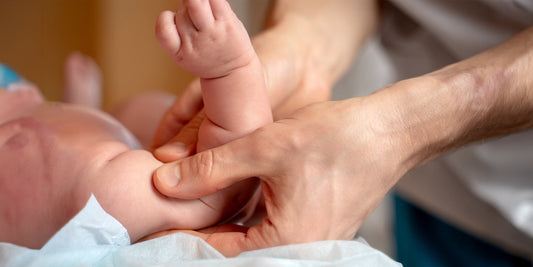
5 Proven Benefits of Oil Massage for Baby’s Hea...
Introduction Before the little ones are able to understand language, we comfort and communicate with them through touch, like holding, cuddling, or stroking them. And baby massage is a part...
5 Proven Benefits of Oil Massage for Baby’s Healthy Start
Introduction Before the little ones are able to understand language, we comfort and communicate with them through touch, like holding, cuddling, or stroking them. And baby massage is a part of this natural impulse. It is a great way to bond with the precious bundles of joy. Now the question is, “What is baby massage?” To put it simply, baby massage is the gentle and rhythmic stroking of your little nugget’s body using the best oil for newborn massage. As part of a daily massage routine, you may gently manipulate your baby’s wrists, fingers, and ankles. Let’s understand how baby massage can be a game-changer for your newborn, and what benefits it possesses. Read on! Baby Massage a Game-Changer for Newborn Well-Being Introduced about 30 years ago in neonatal wards, baby massage supports the development of premature babies. A clinical study in 2004 revealed that babies in intensive care units who were massaged daily spent less time in the hospital and had fewer postnatal complications. Cut to the present day, a baby massage session with the best infant massage oil has a plethora of benefits ranging from improved blood circulation to cherished bonding moments. Besides, it also helps improve a new mother’s sense of well-being. Why Choosing the Right Oil is Crucial for Skin Health? With a plethora of options available in the market, choosing the best oil for newborn massage can be a little challenging. Remember, when selecting an infant massage oil, go for a baby massage oil that is enriched with the goodness of natural oils like sunflower oil, castor oil, sesame oil, coconut oil, olive oil, almond oil, ashwagandha oil, turmeric oil, camphor oil, brahmi oil, basil oil, and cinnamon oil. All these potent ingredients along with vitamin E provide multiple benefits, working together to keep your baby’s delicate skin nourished and moisturized. Benefits of Infant Massage According to the American Academy of Pediatrics, regular sessions with the best oil for infant massage can benefit babies’ health in multiple ways. Read on to know some of the most compelling reasons to incorporate oil massage into your baby’s routine all year round: Oil Massage Promotes Quality Sleep: Regular oil massage with an infant massage oil has been shown to promote better sleep patterns in infants. A study published in the Journal of Clinical Nursing found that infants who received regular massages slept better and longer than those who did not. Quality sleep is essential for a baby’s growth and development. Oil Massage Enhances Flexibility: Gentle massaging can improve the flexibility and strength of a baby’s arms and legs. It stimulates muscle development and helps in building coordination and motor skills, which are crucial for a baby’s physical milestones. Oil Massage Lowers the Stress Levels: Massage has a soothing effect on babies. It helps reduce levels of stress hormones like cortisol. The calming touch during a massage releases endorphins, which can help keep babies happier and more relaxed. Oil Massage Relaxes Muscles: Regular massages with the best infant massage oil help to relax the baby’s muscles, alleviating any tension or discomfort they might experience. This is particularly important as babies grow and start to move more. Oil Massage Promotes Digestion: Massaging a baby’s abdomen can aid in digestion and alleviate common issues such as gas and colic. This can be particularly beneficial after feeding, ensuring that the baby is comfortable and happy. Oil Massage Reduces Skin Sensitivity: Using the best oil for infant massage with natural ingredients can help maintain the baby’s skin health, keeping it moisturized from within and reducing the risk of skin irritations and sensitivities. Regular massages can also help in detecting any skin problems early. Oil Massage Boosts Immunity: Regular massage with a newborn massage oil can enhance the baby’s immune system by improving blood circulation and stimulating the lymphatic system. This helps in the efficient removal of toxins and supports the body’s natural defense mechanisms. How to Use Infant Massage Oil Safely? Your little one’s skin is delicate and sensitive, and therefore, it needs some extra tender loving care. It is more susceptible to environmental aggregators like wind, dry air, cold, and sun. To use an infant massage oil safely, follow the below steps: Opt for a nourishing newborn massage oil with natural ingredients. Take an adequate amount of the oil and rub it in between your palms to warm it up. Gently massage the oil in circular motions. Sing or talk gently during the massage session to keep your little one engaged. Patch test before full use by applying a small amount of the oil to your baby’s elbow. What Oils Should You Avoid? Opt for baby massage oils that are non-irritating, gentle, and safe for delicate baby skin. Try to avoid oils like mustard oil, peanut oil, and corn oil as these oils can cause allergic reactions and skin irritation. Conclusion Now that you’re aware of the incredible benefits of baby massage, get started. With each practice, you will develop a deeper and loving bond with your little one. Happy Bonding!
Read More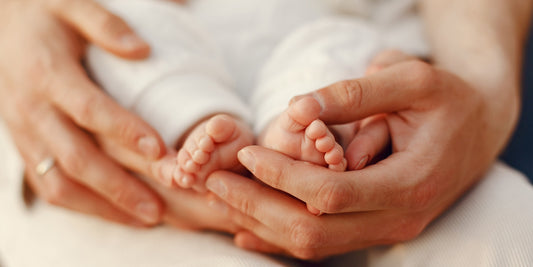
The Ultimate Guide to Choosing Safe and Effecti...
Introduction In a world inundated with a plethora of options, choosing safe and effective baby care products becomes a task. What works for others might not always suit your little...
The Ultimate Guide to Choosing Safe and Effective Baby Care Products
Introduction In a world inundated with a plethora of options, choosing safe and effective baby care products becomes a task. What works for others might not always suit your little one’s delicate skin. As you know, your baby’s skin is 20 times thinner and more sensitive than yours. Compromising on this front can wreak havoc on their skin as it is more susceptible to external stimuli. This necessitates the use of the best newborn skin care products for your little ones. Wondering what to look for? This comprehensive guide will help you! Key Factors to Consider When Choosing Baby Care Products The safety and efficacy of a baby care product lies in its ingredients. Opt for products that are formulated with natural and nourishing ingredients like aloe vera, shea butter, coconut oil, oat kernel flour, and almond oil, to name a few. Besides, steer clear of newborn baby products that contain harmful chemicals and ingredients like sulphates and parabens. The key to maintaining your baby’s skin health lies in selecting newborn baby products that are gentle yet effective. Opting for the best newborn products that are dermatologist-tested and hypoallergenic ensures that your baby’s skin remains calm and protected. Best newborn skin care products will often include formulations enriched with natural oils like coconut, almond, or rice bran oil. These oils are known for their ability to lock in moisture and provide a protective layer against environmental factors. Check the labels of the products for the full ingredients list. The best newborn skin care products will have all the ingredients listed out clearly in order for 100% transparency. Types of Baby Care Products There are countless baby care products available in the market. The following are the must-have products that you shouldn’t compromise on. But first remember, for babies, less is more. Let’s take a look and keep it as minimal as possible: To begin with, talking about bathing products, go for baby wash and shampoo that are tear-free and formulated with natural and gentle ingredients. A baby shampoo should gently cleanse your little one’s scalp and those precious locks without causing damage to the skin. Besides, a tender foaming body wash will help retain moisture and prevent post-bath dryness. Choosing harsh baby bath products containing sulphates and parabens can cause dryness and irritation. In the baby care products you choose to buy, make sure to include a balm moisturizer. Post-bath moisturization is a must as it helps retain moisture and protects the skin from environmental aggregators. Use as needed and whenever required, especially during bedtime. Another must-have product is baby oil. A massage session with a nourishing baby massage oil will not just provide adequate moisturization to the skin but will also offer added benefits like improved blood circulation, bone health, and better sleep. Like you, your baby too needs sunscreen if they are six months or older. The harmful UVA and UVB rays can cause severe damage to the delicate skin of your baby and may even cause sunburn. Hence, make it a point to apply a broad-spectrum sunscreen, preferably with SPF 70 and PA++++ to your little one’s skin before stepping outside. Reapply as and when needed. Tips for Testing New Products Before you introduce a new product to your baby’s skin, make sure to conduct a patch test. Here’s a step-by-step guide to get started: Take a small amount of the product and apply it to your baby’s elbows. Wait for 24 hours to check for any skin irritation, reddening of the skin, or formation of red rashes. If you notice any changes in the skin, discontinue using the product and consult your pediatrician. Where to Find Safe Baby Care Products With a number of products available in the market, it might feel a little daunting to get your hands on the safest ones. The best newborn skin care products are dermatologist-tested and approved. Read on to know more! Look for products that are ECOCERT/ COSMOS Organics-certified and IFRA-certified, which indicate that the products are safe. Each batch of the best newborn skin care products is carefully tested before it reaches the market, guaranteeing only the best for your little one. Products that are dermatologist-approved are safe for the little ones’ delicate skin. Additionally, safe baby care products are free from harmful chemicals and toxins like parabens, mineral oils, sulphates, and phthalates. Buy newborn care products only from genuine websites and retail stores. Importance of Reading Reviews and Seeking Recommendations from Other Parents Only an experienced parent can help you with the most constructive feedback. Seek recommendations and read online reviews regarding the best newborn skin care products from fellow parents. Their feedback will help you get an idea of what to and what not to buy. Newborn care products that are natural and safe are loved by parents. Besides, reviews also show how transparent the baby skin products are. To Sum Up Choosing safe and effective baby care products is a journey filled with love and care. Prioritize products that are natural and free from harmful chemicals and toxins, curated keeping your little one’s unique skin needs in mind. With the correct information and a conscious attitude, you will be able to confidently explore the vast world of baby skin products. Happy Parenting!
Read More